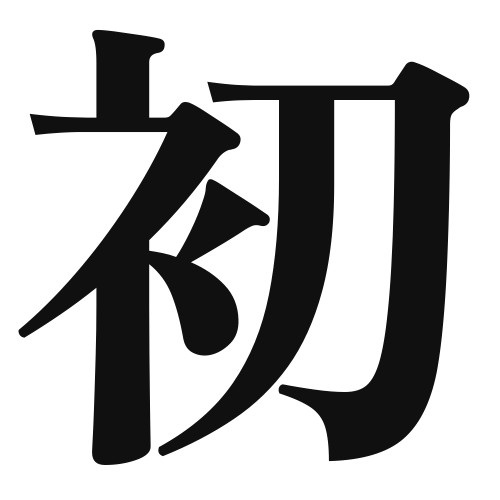1. Overview of Meaning
The kanji “初” (hatsu) means “first” or “beginning.” It is often used to indicate the start of something new or the first occurrence of an event.
2. Formation and Radical
Formation of the Kanji: The kanji “初” is a phonetic-ideographic character (形声文字). It combines the meaning of “beginning” with a phonetic component that suggests its pronunciation.
Radical: The radical for “初” is “衣” (koromo), which relates to clothing, but in this case, it contributes to the overall meaning of the kanji.
3. Examples of Usage
Common Words and Phrases:
- 初めて (hajimete) – for the first time
- 初恋 (hatsukoi) – first love
- 初日の出 (hatsu hinode) – first sunrise of the year
Example Sentences in Daily Conversation:
- 今年の初めての旅行はとても楽しかったです。
- (Kotoshi no hajimete no ryokou wa totemo tanoshikatta desu.) – This year’s first trip was very enjoyable.
4. Synonyms and Antonyms
Similar Kanji:
- 最初 (saisho) – means “the very first” but emphasizes the absolute beginning of something.
- 初期 (shoki) – refers to the early stages of a process or period.
Antonyms:
- 最後 (saigo) – means “last” or “final,” indicating the end of something.
5. Cultural and Historical Background
Relation to Japanese Culture: The concept of “初” is significant in Japanese culture, especially during New Year celebrations, where people look forward to the “初日の出” (hatsu hinode) as a symbol of new beginnings.
Proverbs and Idioms:
- 初志貫徹 (shoshi kantetsu) – means to stick to one’s original intention or goal, emphasizing the importance of perseverance from the beginning.
